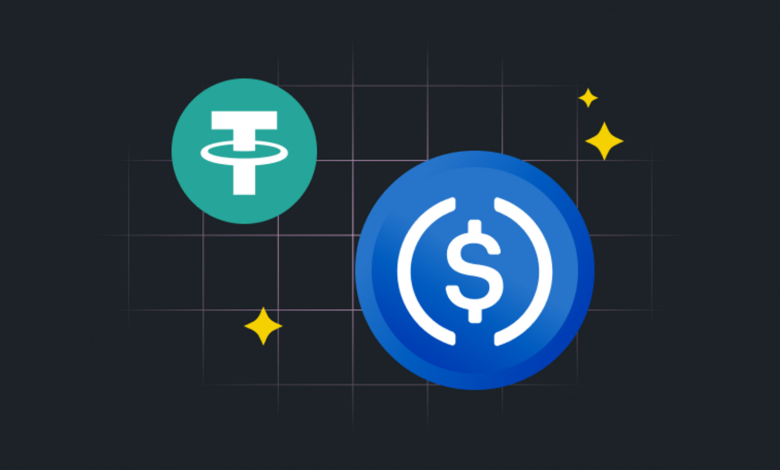How to Trade Solana USDT Safely: A Complete Beginner’s Guide

Introduction
In the fast-paced world of cryptocurrency, trading has become one of the most popular ways to earn profits and grow digital wealth. But with thousands of coins and tokens available, knowing where to start can be confusing — especially when your goal is to combine stability with speed. That’s where Solana USDT comes in.
Solana, a high-speed blockchain network, and USDT (Tether), the world’s most used stablecoin, have joined forces to offer traders an incredibly fast, low-fee, and reliable trading experience. This combination has opened new opportunities for both beginners and experienced investors who want to enjoy the benefits of crypto trading without being trapped by high volatility or network congestion.
In this comprehensive guide, we’ll explain everything you need to know to trade Solana USDT safely — from setting up wallets to understanding risk management and finding the best platforms.
1. Understanding Solana USDT
Before diving into trading, let’s break down what Solana USDT actually means.
- Solana is a blockchain platform known for its extremely fast transaction speeds and low fees. It uses a hybrid consensus mechanism that combines Proof of History (PoH) and Proof of Stake (PoS).
- USDT (Tether) is a stablecoin pegged 1:1 to the US dollar. It’s used by traders who want to keep their value stable even when crypto prices swing dramatically.
Together, these two create a stable, high-performance digital asset that traders can use for quick transactions and low-cost trading.
Solana’s blockchain efficiency means that sending or swapping USDT on the Solana network costs a fraction of what it does on Ethereum or Bitcoin-based systems — often less than one cent per transaction.
2. Why Trade Solana USDT?
There are several compelling reasons why Solana-based USDT is becoming one of the most traded stablecoins in the crypto world:
- Low Fees: Solana transactions typically cost less than $0.001, making frequent trading feasible.
- High Speed: Transactions confirm in under a second.
- DeFi Integration: Many decentralized exchanges (DEXs) and protocols on Solana support trading pairs involving USDT.
- Reduced Volatility: USDT’s stability gives traders a way to store value between trades.
- Cross-Exchange Liquidity: You can easily move Solana USDT between major exchanges and DeFi apps.
All of these advantages make it ideal for traders who want fast, cheap, and stable performance.
3. Setting Up Your Wallet
Before you can start trading, you need a secure wallet that supports Solana’s SPL tokens. Here’s how to set it up:
a. Choose a Wallet
Some popular Solana wallets include:
- Phantom Wallet – User-friendly and browser-based.
- Solflare – Available as a web, desktop, and mobile app.
- Ledger – Hardware wallet for maximum security.
b. Create and Secure Your Wallet
When setting up your wallet:
- Write down your seed phrase on paper (never save it digitally).
- Enable 2FA (two-factor authentication) if available.
- Avoid sharing your private key with anyone.
c. Fund Your Wallet
You’ll need a small amount of SOL (Solana’s native token) to pay for network fees. Usually, 0.01 SOL is more than enough for dozens of transactions.
Once your wallet is ready, you can receive Solana USDT by copying your wallet’s Solana address and transferring from an exchange.
4. Choosing a Trading Platform
You can trade Solana USDT on both centralized and decentralized exchanges. Each has its own pros and cons.
Centralized Exchanges (CEXs)
These are platforms like:
- Binance
- OKX
- Bitfinex
- Bybit
Advantages:
- Easy to use
- High liquidity
- Advanced trading tools
- Customer support
Disadvantages:
- Require KYC (identity verification)
- You don’t control your private keys
Decentralized Exchanges (DEXs)
Examples include:
- Raydium
- Serum
- Orca
Advantages:
- No KYC
- Full control of funds
- Direct wallet-to-wallet trading
Disadvantages:
- Lower liquidity
- Higher risk of user error
For beginners, starting on a centralized exchange is safer. Once you gain experience, you can explore DEXs for better privacy and control.
5. How to Trade Solana USDT on an Exchange
Let’s go through the basic steps:
Step 1: Deposit Funds
Deposit fiat (USD, EUR, etc.) or other cryptocurrencies into your chosen exchange.
Step 2: Buy SOL or USDT
Most exchanges will let you buy either SOL or USDT directly.
Step 3: Swap or Trade
You can trade Solana USDT against other tokens such as SOL, BTC, or ETH. You can also use it as a base trading pair to purchase altcoins.
Step 4: Withdraw to Wallet
For safety, withdraw your holdings to your private wallet instead of leaving them on the exchange.
6. Spot Trading vs Futures Trading
There are two primary ways to trade Solana-based assets:
- Spot Trading: You buy and hold tokens directly. It’s straightforward and less risky.
- Futures or Derivatives Trading: You speculate on price movements using leverage. While profits can be larger, so can losses.
For beginners, spot trading is highly recommended. You can start with small amounts and gradually build confidence.
7. Security Best Practices
Trading safely means protecting your funds at all times. Here are the key steps to stay secure:
- Use 2FA: Always enable two-factor authentication on your exchange and wallet.
- Avoid Public Wi-Fi: Hackers often exploit open networks to steal credentials.
- Use Hardware Wallets: Store large amounts of crypto offline.
- Beware of Phishing: Always double-check website URLs and avoid clicking suspicious links.
- Backup Your Keys: Keep your recovery phrases stored safely offline.
Your goal should be to minimize the number of times your assets are exposed to online risks.
8. Understanding Market Analysis
To trade Solana USDT effectively, you need a basic understanding of market analysis:
a. Technical Analysis
This involves reading charts and identifying price patterns. Learn about:
- Support and resistance levels
- Candlestick patterns
- Moving averages
- RSI (Relative Strength Index)
b. Fundamental Analysis
This means understanding the technology, team, partnerships, and future roadmap of the Solana ecosystem. The stronger the fundamentals, the more stable your long-term investment can be.
c. Sentiment Analysis
Follow news sources, Twitter updates, and on-chain metrics to gauge market mood. When optimism is high, prices often rise — and vice versa.
9. Managing Risks
Risk management separates professional traders from gamblers. Here are key principles:
- Never trade with money you can’t afford to lose.
- Use stop-loss orders to automatically exit losing positions.
- Diversify your portfolio — don’t put all funds in one asset.
- Set profit targets and stick to them.
- Avoid overtrading — more trades don’t always mean more profits.
Following these principles ensures that even if markets move against you, your portfolio remains safe.
10. Using Solana USDT in DeFi Trading
Once you’re comfortable with regular trading, you can explore decentralized finance (DeFi).
Here’s how Solana USDT is used in DeFi:
- Yield Farming: Earn passive income by providing liquidity to pools like Raydium or Orca.
- Lending & Borrowing: Use platforms like Solend to lend your USDT or borrow against it.
- Staking Rewards: Some DeFi protocols reward users for locking up liquidity.
DeFi offers excellent returns but carries higher risk, especially from smart contract bugs. Always research the project before locking in funds.
Conclusion
Trading Solana USDT offers a unique balance between speed, affordability, and stability. For beginners, it’s one of the best entry points into the world of crypto because it minimizes volatility while providing exposure to blockchain technology.
By following this guide — setting up a secure wallet, choosing trusted exchanges, learning basic market analysis, and practicing risk management — you’ll be well-prepared to start trading confidently.
Remember: success in crypto doesn’t come from luck; it comes from preparation, discipline, and consistent learning. With Solana’s powerful network and USDT’s stability, you now have the perfect foundation to build your trading journey.





